In Bayonet Charge, Ted Hughes throws the reader into the chaos of a soldier's sudden sprint across no man's land, bayonet close at hand. The poem begins mid-charge and expertly captures the confusion, fear, and instinctive reactions that often overwhelm a soldier in the heat of battle. Join us as we explore the poems hidden meaning, examining its central themes, structure, and way language is used to create an unsettling picture of a man caught in the madness of war.
| Category | Details |
|---|---|
| Poem Title | Bayonet Charge |
| Poet | Ted Hughes – British poet known for his interest in nature, myth, and the human condition. Served in the Royal Air Force (RAF), which informed many of his views on war and violence. |
| Context | Written post-WWII but set in WWI. Highlights the trauma and futility of war. Hughes critiques patriotic propaganda. As a former serviceman, he focuses on the psychological cost of combat. |
| Main Themes | War and Conflict – The poem explores the brutality and chaos of war through the eyes of an individual soldier. Fear and Confusion – The soldier is disoriented and overwhelmed, acting on instinct rather than thought. Patriotism – Initially driven by patriotic ideals, the soldier begins to question their validity in the face of real violence. Dehumanisation – The soldier is stripped of his humanity, becoming a weapon himself, driven by pure survival. |
| Key Quotations | “Suddenly he awoke and was running” – disorientation, in media res. “The patriotic tear that had brimmed in his eye / Sweating like molten iron” – metaphor for disillusionment. “In what cold clockwork of the stars and the nations / Was he the hand pointing that second?” – reflects on the soldier's insignificance. “His terror’s touchy dynamite” – suggests the soldier is now a weapon driven by fear. |
| Structure & Form | - Free verse with irregular line lengths and enjambment reflects chaos. - Three stanzas showing a journey from idealism to trauma. - Lack of rhyme scheme adds tension. - Third-person limited narrative immerses reader in soldier’s mind. |
| Poetic Devices | Enjambment – creates urgency and mirrors panic. Caesura – interrupts flow, reflecting mental fragmentation. Similes – e.g., 'Sweating like molten iron' shows physical and emotional burden. Alliteration – 'Bullets smacking the belly' mimics harsh violence. Personification – nature and fear become threats. |
| Tone & Mood | Anxious, frantic, breathless – driven by the pace and word choice. Disillusioned and disturbed – shows loss of purpose and rising trauma. |
| Imagery | Violent imagery – 'Bullets smacking', 'smashed arm'. Natural imagery contrasts destruction – 'green hedge', 'yellow hare'. Nature reflects soldier’s fear and vulnerability. |
| Main Message | Challenges glorified depictions of war. Shows how ideology fades under real violence. Demonstrates how war dehumanises soldiers and forces them into survival mode. |
| Poetry Comparisons | Remains (Armitage)– both explore trauma and moral injury. Charge of the Light Brigade (Tennyson) – contrasts glorified duty with panic. Exposure (Owens) – similar themes of fear and loss. War Photographer – contrast between war’s reality and distant perspectives. |


Bayonet Charge Summary
Bayonet Charge by Ted Hughes follows a soldier’s sudden rush across a battlefield during war. It captures his confusion, fear, and instinct for survival as he questions the purpose of violence and patriotism. The poem shows how war strips away ideals and reduces a man to raw emotion and action.
The poem puts us inside the soldier's head right when everything begins to fall apart. Instead of charging towards the enemy with purpose, the soldier is only moving because his body tells him to. What matters is staying alive.
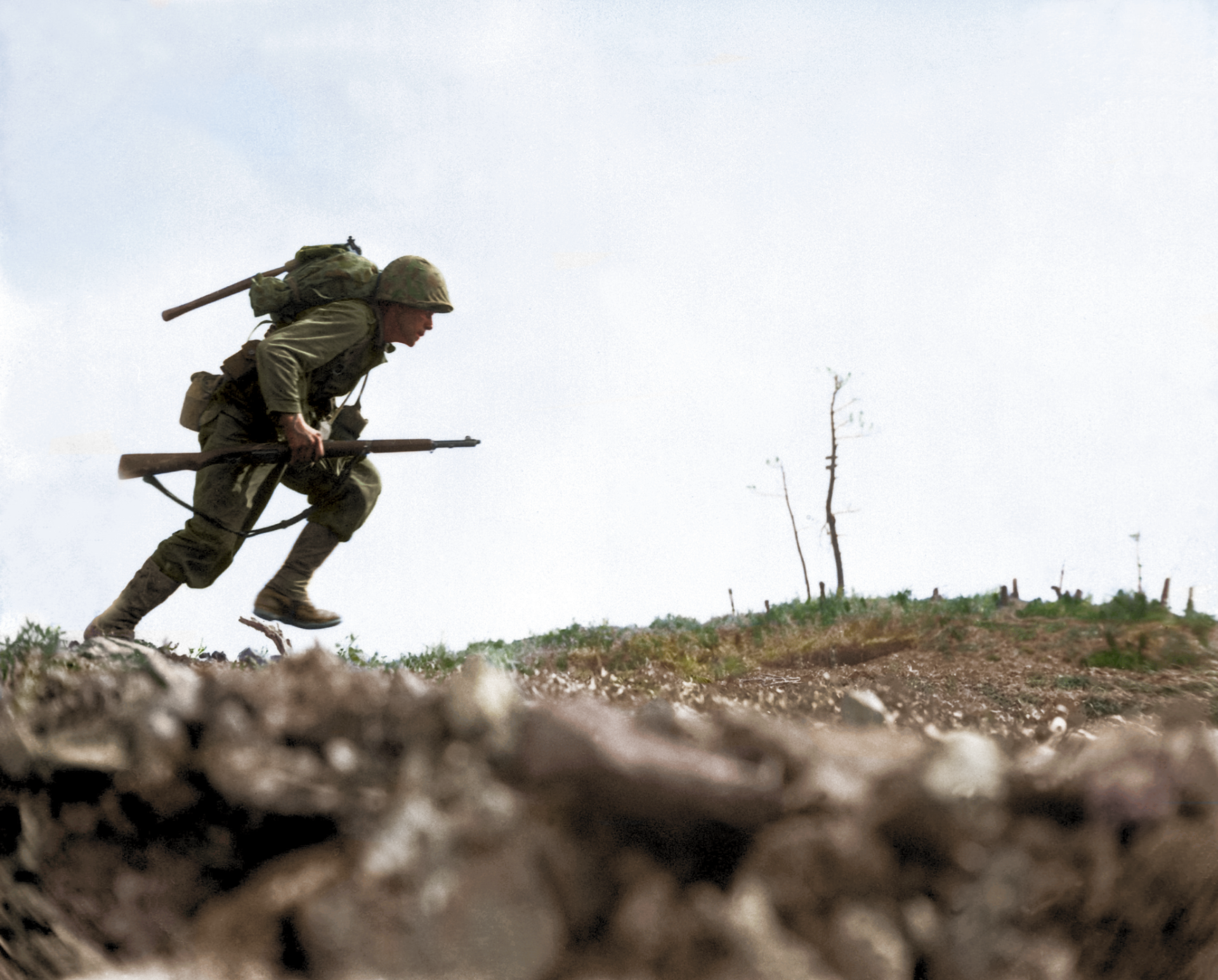
Bayonet Charge drops us straight into the panic of a soldier sprinting across no man's land during World War 1. The soldier is terrified, stumbling through mud with bullets flying past him, his body moving before his mind has a chance to catch up.
At first, he's driven purely by instinct. But as he continues to run, he begins to question everything - not just his orders, but the very point of being there. The growing doubt builds until he sees a wounded hare, flailing in terror across the battlefield.


By the end of the poem, the soldier is no longer thinking. He's moving blindly, driven by a sheer instinct to survive. All sense of purpose has vanished - the ideals that once seemed important to him have been stripped away by the chaos happening around him
What To Remember
Who Wrote Bayonet Charge?
Although Ted Hughes didn't actually fight in a war himself, his father did. He served in World War I and was injured at Gallipoli - an experience that deeply affected Hughes and his personal feelings towards war.
Ted Hughes wrote Bayonet Charge in 1957, publishing it in his first collection, The Hawk in the Rain. Born in Yorkshire, Hughes' poems often focused on nature, violence, and examining the deeper instincts that drive human behaviour - themes that run through much of his work.
Although Hughes would eventually go on to become Poet Laureate in 1984, it was his earlier, more visceral poems that cemented his reputation and left the most impact on readers both young and old.
Why it Matters for This Poem
Pace and Tone in Bayonet Charge
Pace
Pace in poetry refers to the speed or rhythm at which the poem progresses. In "Bayonet Charge", the pace is frantic, mirroring the urgency and chaos of the battlefield
Tone
Tone refers to the attitude or feeling conveyed by the poet through the language and style of the poem. In Bayonet Charge, the tone is grim and desperate, reflecting the brutality and disorientation of war

The poem starts abruptly, with no explanation. The soldier is unlikely to have been actually sleeping. Instead, the line “Suddenly he awoke” signals a jolt into action from a still state - as if time suddenly snapped forward.
As he continues to run, the soldier appears clumsy and off balance. He stumbles, panics, and lugs his rifle “as though it were a broken toy”. His breath is also ragged, and his chest is described as “sweating like molten iron”.
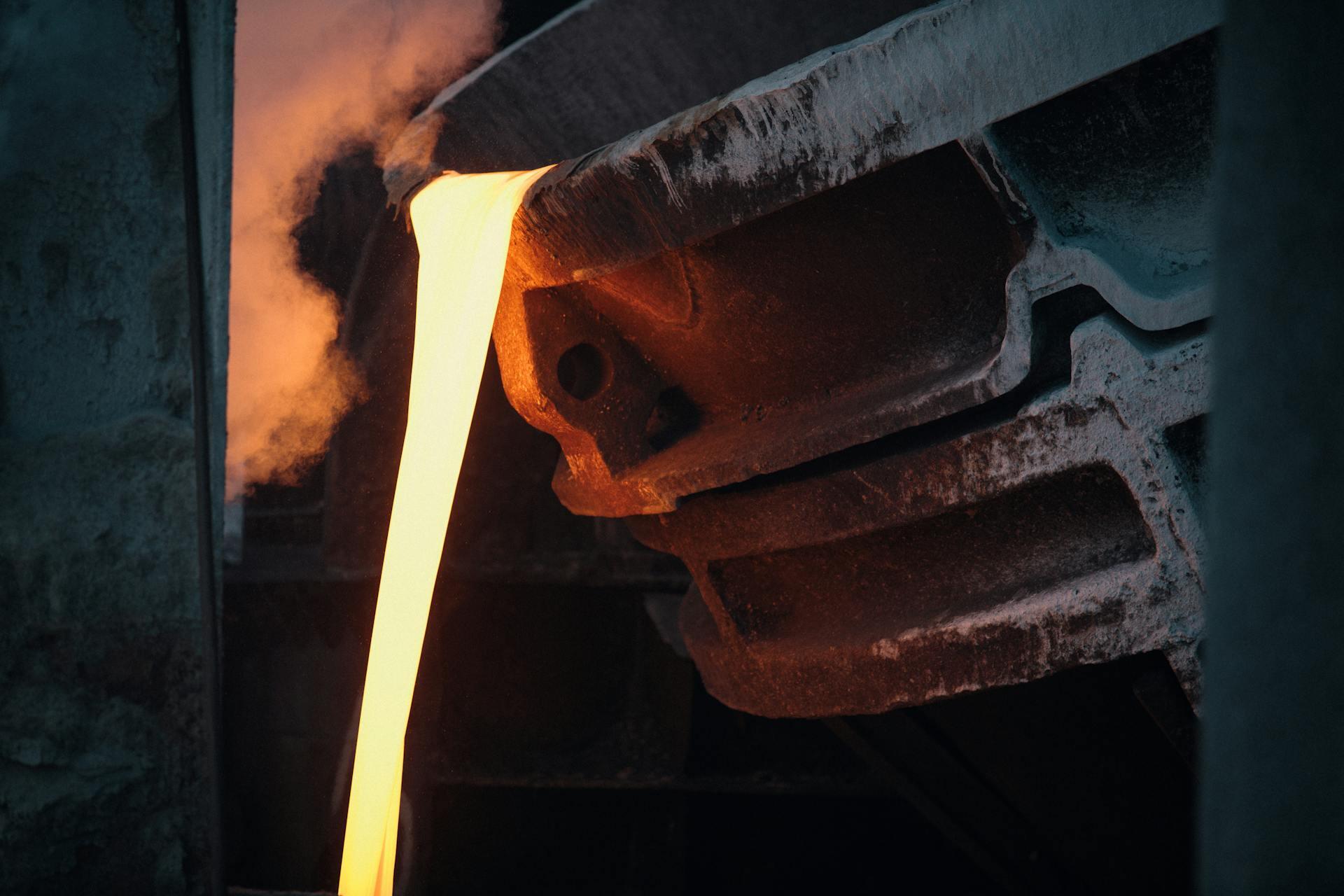

All in all, these powerful images show us that the soldier is not acting with any real purpose, he's terrified and in pain. Hughes matches this feeling by using a literary technique called enjambment to create a fast, breathless, sort of rhythm.
The Charge Begins
Enjambment is a poetic device where a sentence or phrase runs over the end of a line or stanza, without a pause or a punctuation mark. This creates a sense of continuity and flow in the poem, often leading the reader to carry the meaning from one line to the next. It's a technique commonly used in poetry to create rhythm and to emphasize certain ideas or images.
A Sudden Pause in Time

The soldier seems to question "Why me? Why here and now?". He no longer knows why he's running and his mind seems frozen while his body continues moving. Hughes captures this tension with the image of the soldier as the hand on a clock, controlled by the “cold clockwork of the stars and the nations.”
This line is longer than most others in the poem, with twelve syllables and three strong stresses at the start. This structure forces the reader to slow as they read the poem. The phrase itself suggests something mechanical or emotionless and is a metaphor for how war strips away human control
The 'still' of 'still running' is used as an adjective. It could be understood to describe the continuing running of the soldier. Yet the word is ambiguous, suggesting an oxymoron of unmoving running that is like a severe slow-motion sequence in a film. Then the 'shot-slashed furrows' prepare us to shift into a different gear again.
Want to excel in AP English? An English tutor can provide targeted practice and study strategies for top scores.

Bayonet Charge Themes
Isolation in war isn’t unique to Bayonet Charge. In The Yellow Palm, Robert Minhinnick explores emotional distance during conflict. The speaker walks through a war-torn city, disconnected from everything around him.
Form And Structure in Bayonet Charge
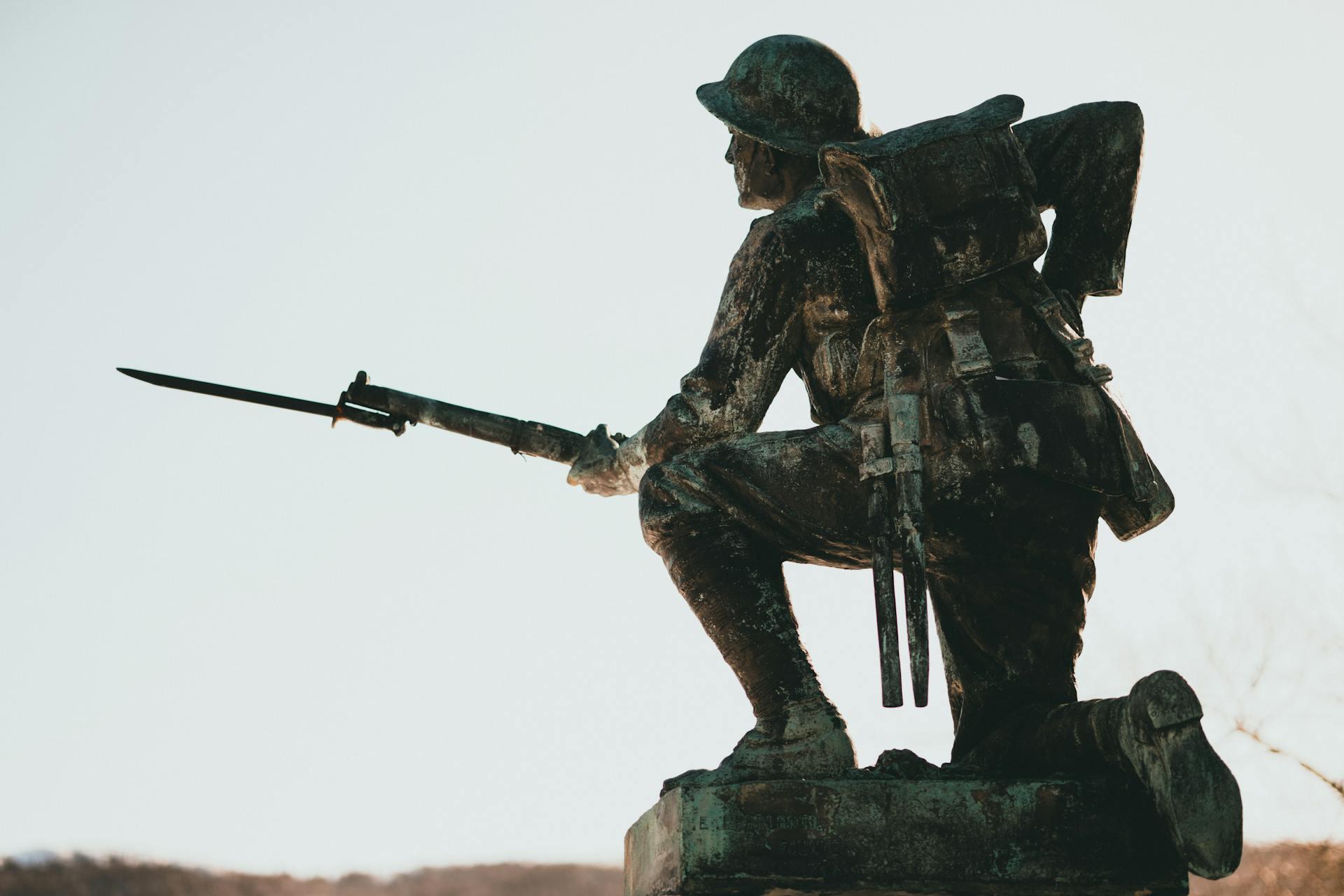
Form
Written in free verse, with no regular rhyme scheme or metre. Irregular line and stanza lengths reflect the soldier's instability. Enjambment and caesura create a fast paced/ disjointed rhythm.
Content
The poem follows a single soldier during a charge. It focuses on his panicked thoughts and physical actions. There is no clear setting or resolution to the poem.
Although the poem is split into three stanzas, the structure feels loose and unpredictable. This because there's no regular rhyme scheme or rhythm holding everything together - thus mirroring the soldier's mental state.
While he might look part of an organised army, inside the soldier is clearly falling apart. The author hints at this with the line “raw-seamed, hot khaki” which shows that beneath the uniform, he's still very much a frightened citizen. For a deeper analysis of his work, consider working with an English tutor.
Hughes uses enjambment to keep the pace of the poem fast and breathless. But then he breaks that flow with the line ”Threw up a yellow hare”. By placing it at the start of a new stanza, the line feels very jarring and impactful, jolting the reader and soldier back to the harsh reality of the battlefield.
Find out more about poetic devices and form used in Thomas Hardy's Neutral Tones poem.
Bayonet Charge Literary Devices
Bayonet Charge is packed with literary techniques that help bring the soldiers experience to life. The table found below picks out some of the key devices Hughes uses and how they help shape the pace, mood, and overall meaning of the poem. Take a look for yourself.
An English tutor can help you understand and appreciate the historical and cultural context of various literary works.
| Literary Device | Purpose / Effect | Example(s) from Bayonet Charge |
|---|---|---|
| Enjambment | Enjambment pushes the reader forward across lines without pausing, mimicking the soldier’s breathless panic and chaotic motion. It reflects the lack of control and urgency during battle. This unsettles the reader and enhances tension. | “Suddenly he awoke and was running— / raw” creates a rushed, breathless effect, mirroring the soldier’s immediate reaction. |
| Caesura | Caesura inserts sudden breaks or pauses in the middle of lines, representing the soldier’s fragmented thoughts and the disorienting impact of war. It slows the pace briefly, evoking hesitation and confusion. | “King, honour, human dignity, etcetera / Dropped like luxuries” — the pause isolates lofty ideals, suggesting their sudden irrelevance. |
| Simile | Similes make abstract or complex feelings tangible by comparing them to vivid, sensory experiences. Here, they express physical pain and emotional conflict clearly. | “Sweating like molten iron from the centre of his chest” compares the soldier’s sweat and emotion to molten metal, implying intense heat, pressure, and transformation. |
| Alliteration | Repetition of consonant sounds creates a harsh, jarring effect, mimicking the violence and noise of war. It enhances sensory immersion and can emphasize particular words or emotions. | “Bullets smacking the belly out of the air” uses the ‘b’ sound to evoke sharp, brutal impacts, reinforcing the violence of the scene. |
| Metaphor | Metaphors allow abstract ideas like fear and trauma to be understood as physical or tangible forces, showing how deeply war affects the soldier psychologically and physically. | “His terror’s touchy dynamite” – fear is compared to volatile explosive material, emphasizing how fragile and dangerous his emotional state is. |
| Personification | Giving human qualities to non-human entities (like nature or abstract ideas) makes them active participants in the poem, showing how the environment and external forces ‘attack’ or control the soldier. | “In what cold clockwork of the stars and the nations” suggests that the universe (stars) and political powers (nations) operate mechanically, indifferent to human suffering. |
| Imagery | Strong descriptive language appeals to the senses, painting vivid pictures that convey the horrors and contradictions of war. Juxtaposition of natural and violent imagery highlights the clash between innocence and destruction. | “King, honour, human dignity, etcetera” vs. “yellow hare” — abstract ideals contrasted with a vulnerable animal symbolize innocence caught in deadly chaos. |
| Repetition | Repeating words or sounds emphasizes emotions like fear or urgency and mimics the pounding heartbeat or repeated actions of the soldier, enhancing the poem’s rhythm and mood. | The word “run” and “raw” are repeated closely to intensify urgency and the rawness of the soldier’s experience. |
| Symbolism | Objects or images stand for larger ideas, allowing the poem to convey complex themes succinctly. Symbols deepen meaning by connecting personal experience to universal ideas like innocence, patriotism, or fate. | The “yellow hare” symbolizes innocence and vulnerability, running frantically through danger much like the soldier. |
| In medias res | Starting in the middle of action creates immediacy and immerses the reader directly in the soldier’s experience, reflecting the confusion and suddenness of combat. It forces the reader to piece together context alongside the soldier. | Opening line “Suddenly he awoke and was running” throws the reader into frantic action without preamble, mirroring disorientation. |
Bayonet Charge Language
Uniquely, the poem doesn't describe a specific battle or name the soldier featured in the story. Instead, Hughes refers to the man via simple pronouns like ”he” and “his”. Much like the bride in Charlotte Mew's poem, the act of running away is central to the narrative.
Overall, the language is stripped back and is filled with harsh verbs and unsettling images. For example, the simile “he lugged a rifle numb as a smashed arm” describes more than just weight - it evokes thoughts of injury, uselessness, and trauma. Later the line, “his foot hung like statuary” freezes the soldier mid motion, showing how fear can quickly paralyse a person. For further personalised advice on literary analysis, consider consulting an English tutor.
Remember to use WPSLOMP - 'what is it about', perspective, structure, language, other methods and personal opinion were used to in our Bayonet Charge analysis. You might be familiar with this acronym. If you need more practice using it to critique poetry, you can try your hand at it with Percy Bysshe Shelly's Love Philosophy.
Lexis linked to violence and pressure also dominate the poem too, creating an almost suffocating experience for the reader. Key examples include:
- Sweating - shows stress and intense physical effort
- Molten - evokes heat and inner pressure, like a boiling core
- Smacking - fast, violent, and sudden. You can almost hear the noise in your inner mind
Lastly, the line “King, honour, human dignity, etcetera” brushes past big ideals like they're no longer important. In constrast, the injured hare is described in extra detail. Hughes shows here that in war, fear and survival matter more than noble ideals. Unlike Carol Ann Duffy's Medusa, there is neither suspicion nor doubt in his mind.
Test Your Knowledge Of Bayonet Charge
How well do you know the themes, literary techniques and language in the poem? Get ready for the exam with our revision flashcards!

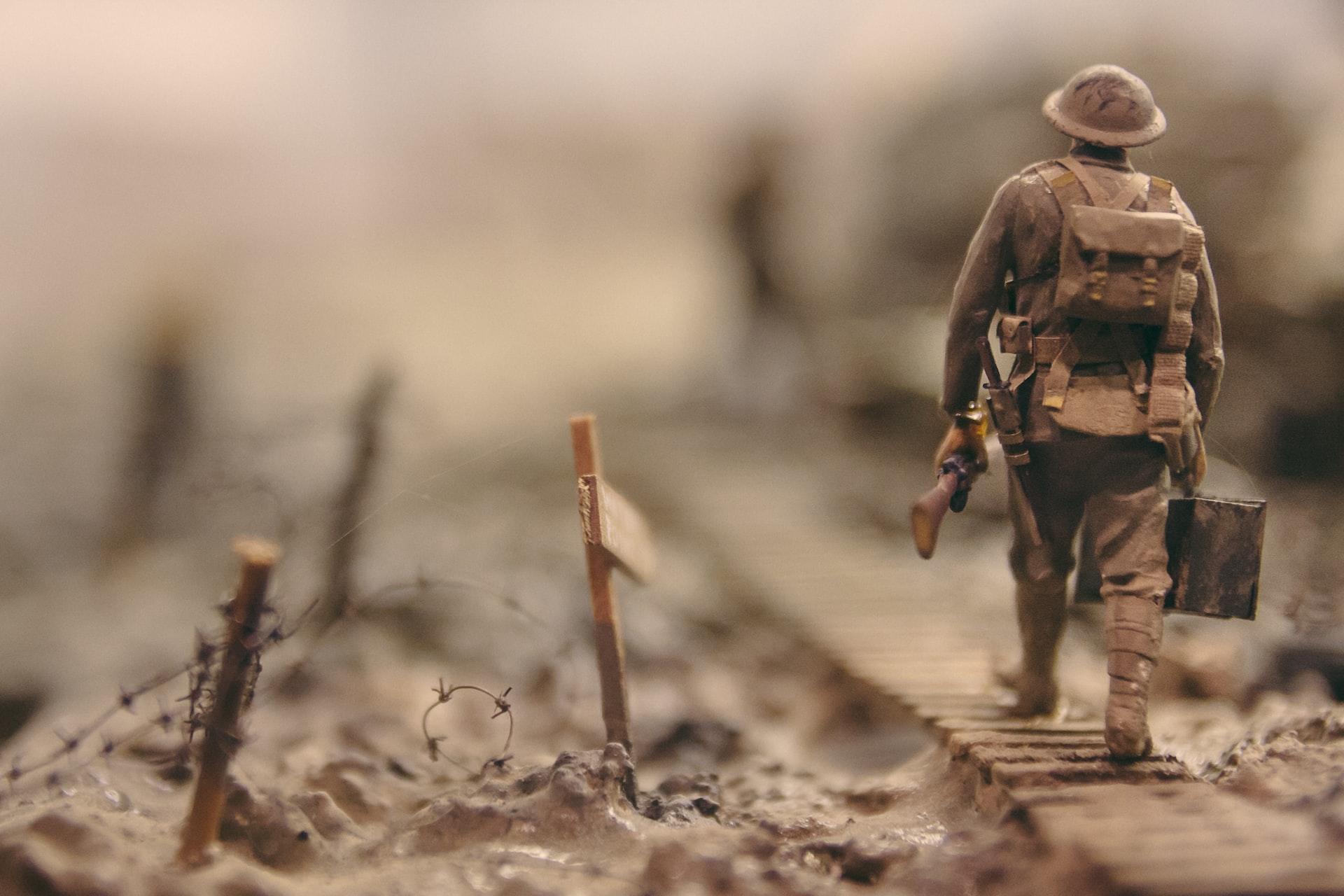
















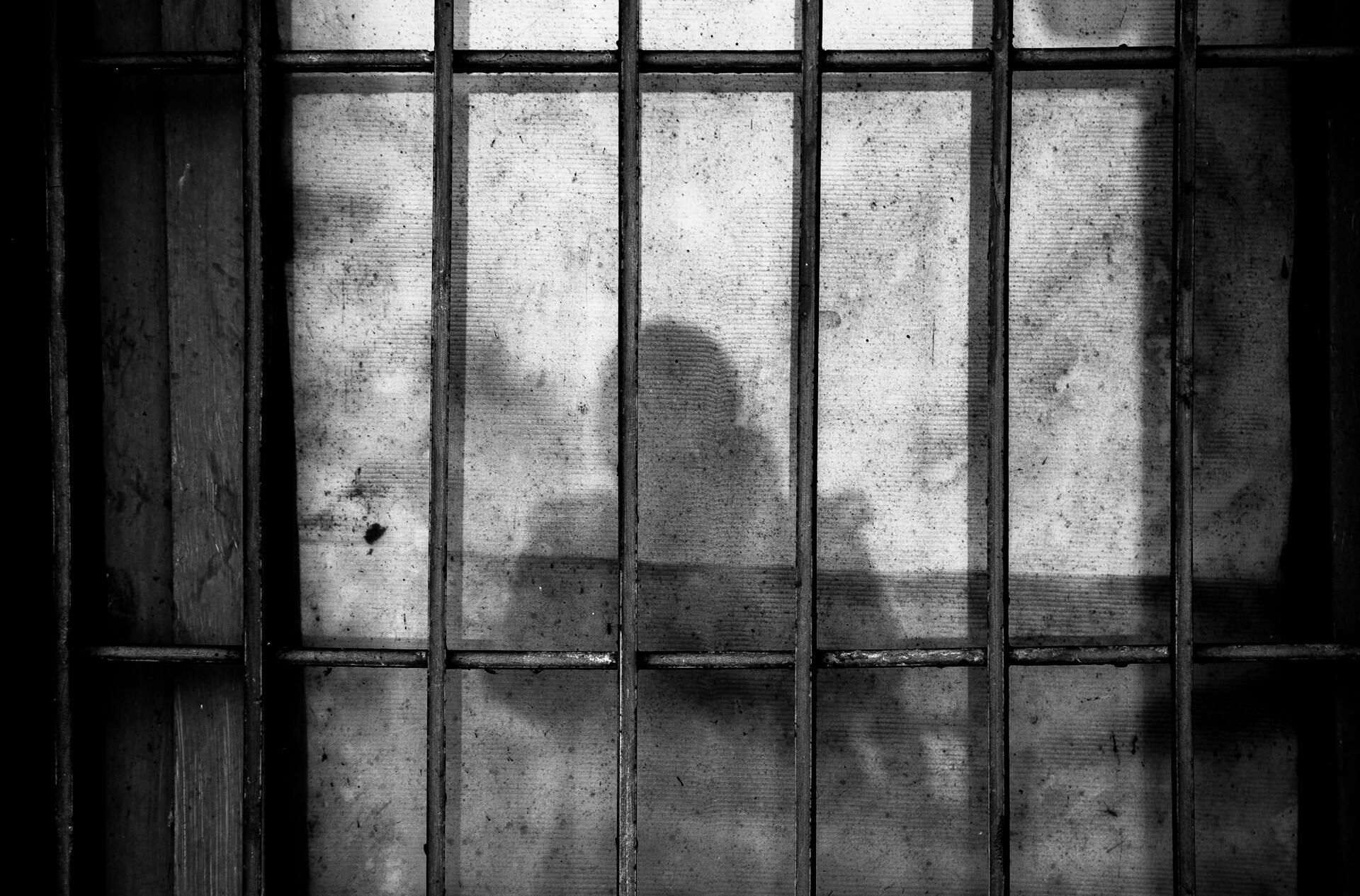






I learnt all about this in my English class.